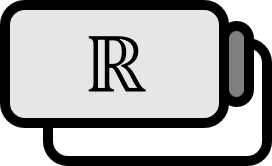Limits from the Left and the Right Strictly Defined in Analysis
Definition
- Let’s assume a function $f :X \to \mathbb{R}$ is given in a metric space $X$. If $f$ is not continuous at $x\in X$, $f$ is said to be discontinuous at $x$ or to have a discontinuity at $x$.
$f: (a,b) \to \mathbb{R}$ is assumed.
For any point $x$, let $a \le x <b$. Consider a sequence of points $(x,b)$ that converges to $x$ and call it $\left\{ t_{n} \right\}$. If for every $\left\{ t_{n} \right\}$ $$ \lim \limits_{n \to \infty}f(t_{n})=q $$ holds, we denote it as $f(x+)=q$ and call $q$ the right-hand limit of $f$ at $x$.
For any point $x$, let $a< x \le b$. Consider a sequence of points $(a,x)$ that converges to $x$ and call it $\left\{ t_{n} \right\}$. If for every $\left\{ t_{n} \right\}$ $$ \lim \limits_{n\to\infty} f(t_{n})=q $$ holds, we denote it as $f(x-)=q$ and call $q$ the left-hand limit of $f$ at $x$.
Explanation
To talk about discontinuity in detail, we define the concepts of left-hand limit and right-hand limit as above. It should be noted that the left-hand limit and right-hand limit are not only defined at points of discontinuity but can be defined at any point.
The definition has been rigorously given in the language of analysis, but the concept itself is no different from the left-hand limit and right-hand limit learned in high school. The idea is to call the limit a right-hand limit if the sequence of function values converges when considering a sequence converging to $x$ composed only of points greater than $x$, and the opposite case a left-hand limit. According to the above definition, it is clear that the following fact holds. In high school, the below proposition was the definition of continuity.
Theorem
For any point $x\in (a,b)$, the existence of the limit $\lim \limits_{t \to x}f(t)$
$$ f(x+)=f(x-)=\lim \limits_{t\to x }f(t) $$
is equivalent to the statement.
